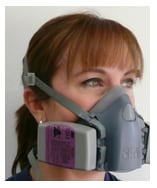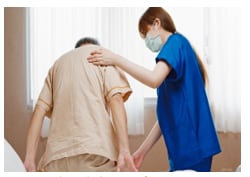Healthcare and Social Assistance Program PPOP
The National Institute for Occupational Safety and Health (NIOSH) Healthcare and Social Assistance (HCSA) Program prevents occupational injury and illness, while optimizing workers’ health and well-being through a range of efforts and partnerships. Program priorities include:
- Identify interventions to improve work organization, safety culture, and well-being.
- Reduce stress, anxiety, depression, fatigue, burnout, substance use disorders, and suicides.
- Prevent injuries from lifting, falls, sharp instruments, and other physical hazards.
- Interrupt transmission of pathogens and drug-resistant organisms.
- Minimize exposure to substances associated with cancer, adverse reproductive outcomes, dermal diseases, and work-related asthma.
- Reduce injuries associated with violence, especially for workers in non-standard work arrangements.
- Conduct surveillance for work-related deaths, injuries, diseases, and risk factors. Provide findings to the research community,
- Address knowledge gaps and barriers to develop effective prevention strategies. Examples include determining risk factors for disease transmission and injury mechanisms.
- Disseminate useful prevention strategies for all HCSA workers. Reduce disparities through outreach to underserved and disproportionately affected HCSA worker populations.
- Demonstrate the strong connection between worker safety and patient safety and show effectiveness of prevention interventions for both patients and workers
- Initiated efforts to improve mental health and well-being of HCSA workers.
- Found that HCSA workers who routinely wore PPE as a part of their job prior to the COVID-19 pandemic had significantly higher levels of confidence in PPE protection during the pandemic.
- Characterized how some frontline healthcare workers sometimes or always lacked PPE during the COVID-19 pandemic.
- Determined that dental evacuation systems may be effective in aerosol exposure mitigation.
- Described mortality from all-causes for 11,620 U.S. veterinarians who died during 1979–2015.
- Confirmed that home healthcare workers had worse general, physical, and mental health compared with low-wage workers not in home health.
- Reduced the risk of tuberculosis transmission from Asian elephants to zoo employees in a NIOSH Health Hazard Evaluation.
- Discovered limited knowledge of infectious disease transmission and occupational risk among large animal veterinarians.
- Investigate waste anesthetic gas exposure and associated health concerns among veterinary personnel.
- Evaluate COVID-19 vaccine hesitancy among veterinarians.
- Develop and distribute materials for veterinary practices about protective technologies and safe work practices in handling antineoplastic and other hazardous drugs.
- Describe pre-pandemic well-being and mental health among healthcare workers.
- Examine moral injury among healthcare workers who have served on the frontlines during the COVID-19 pandemic.
- Characterize workplace factors affecting post-traumatic stress disorder among nurses.
- Identify mental health and well-being supports for long term care workers and employers.

Mention of any company or product does not constitute endorsement by the National Institute for Occupational Safety and Health, Centers for Disease Control and Prevention
The mission of the Healthcare and Social Assistance (HSCA) Program is to eliminate occupational diseases, injuries, and fatalities and optimize workers’ health and well-being in HCSA industries. The HCSA Program supports human and veterinary healthcare and social assistance services across a broad range of settings such as hospitals, clinics, nursing and private homes, and child day care. This snapshot shows recent accomplishments and up-coming work.

Source: https://pubmed.ncbi.nlm.nih.gov/35704776/

Source: https://bit.ly/3MHMpcf
To learn more, visit
www.cdc.gov/niosh/hcsa/
August 2022
